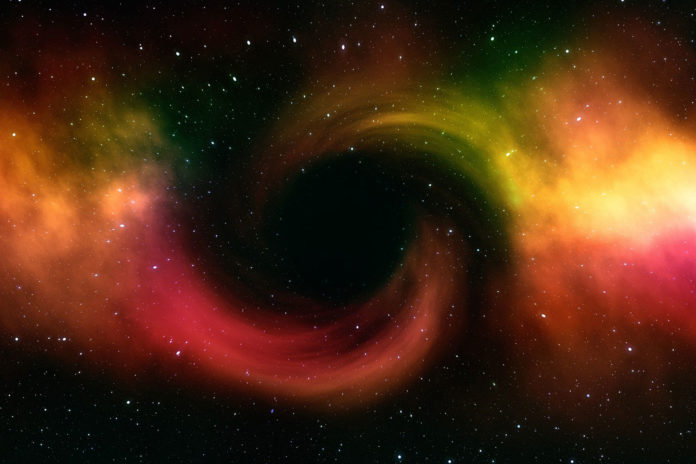Black holes are extremely hard to detect. However, their presence can be inferred by detecting their effect on other matter nearby.
How many black holes are out there? The short answer is a lot. Estimating the precise digit requires numerous calculations.
A new study by the SISSA Ph.D. student Alex Sicilia, supervised by Prof. Andrea Lapi and Dr. Lumen Boco, together with other collaborators, recently made the fascinating calculation. They used a new computational approach to investigate the demographics of stellar-mass black holes, which are black holes with masses between a few to some hundred solar masses.
They found that around 1% of the Universe’s overall ordinary (baryonic) matter is locked up in stellar-mass black holes. Astonishingly, they found that there are about 40 trillion- 40 billion billions (i.e., about 40 x 1018, i.e., 4 followed by 19 zeros!) of Black Holes in the Universe.
Their approach combines advanced stellar and binary evolution code SEVEN developed by SISSA researcher Dr. Mario Spera to observe prescriptions for relevant physical properties of galaxies, especially the rate of star formation, the amount of stellar mass, and the metallicity of the interstellar medium. Exploiting all these ingredients in the self-consistent approach, scientists obtained the number of stellar black holes and their mass distribution across the whole history of the Universe.
Alex Sicilia, the first author of the study, comments, “The innovative character of this work is in the coupling of a detailed model of stellar and binary evolution with advanced recipes for star formation and metal enrichment in individual galaxies. This is one of the first and one of the
most robust, ab initio computation of the stellar black hole mass function across cosmic history.”
For this study, scientists also collaborated with Dr. Ugo Di Carlo and Prof. Michela Mapelli from the University of Padova. In collaboration, they explored the various formation channels for black holes of different masses, like isolated stars, binary systems, and stellar clusters.
They found that most massive stellar black holes originate from dynamic events in stellar clusters. Such events are required to explain the mass function of merging black holes as estimated from gravitational wave observations by the LIGO/Virgo collaboration.
Lumen Boco, co-author of the paper, comments: “Our work provides a robust theory for the generation of light seeds for (super)massive black holes at high redshift, and can constitute a starting point to investigate the origin of ‘heavy seeds.”
Prof. Andrea Lapi, Sicilia’s supervisor and coordinator of the Ph.D. in
Astrophysics and Cosmology at SISSA, adds: “This research is multidisciplinary, covering aspects of, and requiring expertise in stellar astrophysics, galaxy formation and evolution, gravitational wave and multi-messenger astrophysics; as such it needs collaborative efforts from various members of the SISSA Astrophysics and Cosmology group, and a strong networking with external collaborators.”
This multidisciplinary work was carried out in the context of “BiD4BESt – Big Data Application for Black Hole Evolution Studies”, a prestigious Innovative Training Network Project co-PIed by Prof. Andrea Lapi from SISSA (H2020 MSCAITN-2019 Project 860744). The European Union has funded it with about 3.5 million Euros overall.
Journal Reference:
- Alex Sicilia, Andrea Lapi, et al. The Black Hole Mass Function Across Cosmic Times. I. Stellar Black Holes and Light Seed Distribution. DOI: 10.3847/1538-4357/ac34fb
